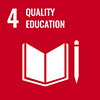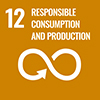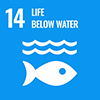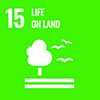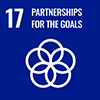Two Thompson Rivers University (TRU) undergraduate students have achieved a remarkable milestone — publication in Nanotechnology, one of the world’s leading journals in physics, chemistry and materials science.
Physics student Nuwan Ambagahawatta and microbiology student Emma Trotta contributed to a cross-disciplinary review on micro- and nanoplastics – tiny plastic particles that either result from the breakdown of larger plastics or are intentionally manufactured at extremely small sizes. Their review summarizes current knowledge about how these particles originate, move through the environment, and affect ecosystems and living organisms. It also examines potential strategies to reduce nanoplastic pollution.
The project brought together expertise in physics, microbiology and environmental science.
“Our ongoing research on micro- and nanoplastics is a wonderful example of student- and community-driven science,” says TRU microbiologist Dr. Naowarat (Ann) Cheeptham.
She describes how the project began when Kamloops resident Lisa Forth wondered whether worms could use cardboard as bedding and help improve microbial diversity in her compost. That simple question became the foundation for a broader investigation as the research team began exploring microplastics in municipal compost.
“I feel privileged to supervise our dedicated undergraduate researchers, Emma and Nuwan, and to work alongside TRU science faculty members Drs. Anusha Venkataraman and Kingsley Donkor, as well as partner organizations, including the City of Kamloops,” she says.
Learning by doing
Trotta led portions of the project involving microscopic analysis and work with tiny organisms. She notes that grants—including the Mitacs Accelerate Grant, the City of Kamloops Climate Action Grant and the TRU Student Sustainability Grant—made her continued research possible.
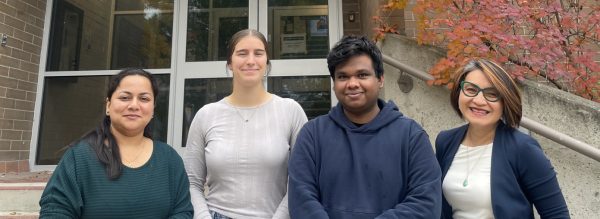
Pictured left to right: TRU faculty member Dr. Anusha Venkataraman, microbiology student Emma Trotta, physics student Nuwan Ambagahawatta and faculty member Dr. Naowarat (Ann) Cheeptham
“I am exceptionally fortunate to have the opportunity to conduct research at this level through TRU,” she says. “I am grateful to work with a team that values my ideas and contributions, allowing me to play a role in advancing scientific understanding.
“Our ongoing work on micro- and nanoplastic contamination is of significant environmental and public health importance, and I am eager to see how this project will enhance our ability to better characterize and ultimately mitigate plastic pollution.”
Ambagahawatta joined the research group through a directed studies project, focusing on analytical and data-driven approaches. He recently applied for a UREAP (Undergraduate Research Experience Award Program) to continue building on this foundation.
“This work opened a whole new chapter for me,” he says. “I came to understand how micro- and nanoplastic contamination affects ecosystems on a global scale, and how synthesizing this knowledge can help raise awareness.
“TRU provided me the opportunity to work closely with my mentors, Dr. Anusha Venkataraman and Dr. Ann Cheeptham. Contributing to this publication is not just an academic achievement, it also helped me realize I can actively contribute to meaningful science in the world.”
Together, the students’ complementary skills demonstrate the value of hands-on, interdisciplinary learning at TRU.
Collaborative research
The project also involves collaboration with faculty and students from other universities, including Dr. Chris Papadopoulos and graduate student Gibson Asumani Boakye from the University of Victoria. These partnerships highlight TRU’s growing presence in global research on plastic pollution. By sharing resources and mentorship, the team is exploring how micro- and nanoplastics move through ecosystems and what long-term impacts they may have.
“Microplastics and nanoplastics are now found in soil, water and even food, making it increasingly urgent to understand how they form, move and interact with ecosystems,” says TRU science faculty member Dr. Anusha Venkataraman.
She adds that the project draws on expertise from physics, microbiology, chemistry and materials science, and that undergraduate researchers Trotta and Ambagahawatta took on the interdisciplinary challenge with enthusiasm.
“Their openness to learn across disciplines strengthened the research and reflects the collaborative science we value at TRU,” she says.
“Their dedication and professionalism also highlight the strength of TRU’s undergraduate research community.”
Venkataraman notes that while the publication focuses on synthesizing existing knowledge, the team is also conducting hands-on experimental research to better understand micro- and nanoplastics in real-world settings.
“I look forward to continuing this work with our research team and partner organizations.”
For Ambagahawatta and Trotta, publication in a leading journal is more than an academic achievement—it’s a reflection of what becomes possible when curiosity, mentorship and community partnership come together. Their success underscores TRU’s commitment to creating opportunities where undergraduate researchers can grow, contribute and lead.
And as micro- and nanoplastic pollution continues to challenge ecosystems worldwide, their work offers knowledge and hope for the path ahead.
Thompson Rivers University is leading in sustainability. Learn more about TRU’s contributions to the UN Sustainable Development Goals.

